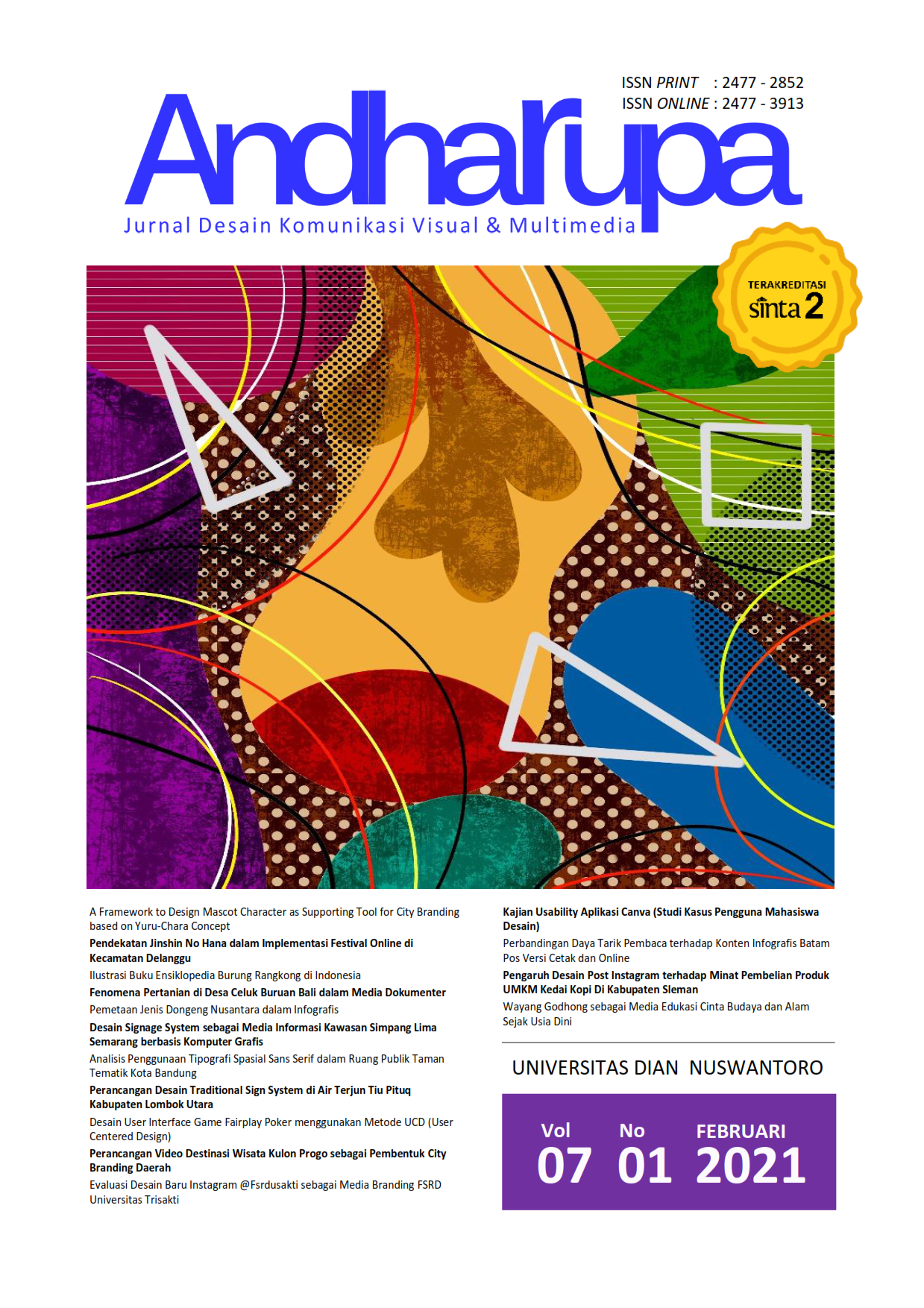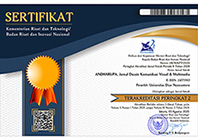PERBANDINGAN DAYA TARIK PEMBACA TERHADAP KONTEN INFOGRAFIS BATAM POS VERSI CETAK DAN ONLINE
DOI:
https://doi.org/10.33633/andharupa.v7i01.3589Abstract
AbstrakPerkembangan teknologi informasi memberikan kontribusi nyata terhadap perkembangan media dalam bentuk maupun sajian informasinya yang sekaligus juga memberikan dampak pada khalayak dalam mengaksesnya. Berdasarkan hasil wawancara penulis dengan beberapa konsumen berita tersebut didapatkan dari 20 orang yang diwawancarai ternyata hanya 5 diantaranya yang mengonsumsi berita melalui media cetak (koran). Dimana ini membuktikan bahwa media cetak mengalami penurunan ketertarikan pembaca. Namun pada akhir-akhir ini banyak media koran yang menggunakan infografis sebagai media visual sebagai penampung dari berita-berita, maka dari itu penulis melakukan perbandingan bagaimana pengaruh infografis yang ada pada media cetak dan media online di Batam Pos akan mempengaruhi ketertarikan pembaca. Pada penelitian ini menggunakan metode kuantitatif komparatif dengan melakukan beberapa analisis pendukung. Hasil dari perhitungan data yang ada menunjukkan bahwa infografis pada media cetak lebih memiliki peran terhadap pengaruh ketertarikan pembaca dibanding media online. Kata Kunci: Batam Pos, infografis, ketertarikan pembaca, media AbstractTechnological developments make a real contribution to the development of media in the form of any information presentations that also have an impact on the audience in accessing it. Based on result interviews with several consumers obtained from 20 people interviewed, only five were approved who consumed the news through print media (newspapers). This proves that print media cancel the decline in reader interest. However, in recent years many media newspapers have used graphics as visual media as news collectors. Therefore the writer wants to compare how the influence of installing infographics in printing and online media in Batam Pos will be interested in attracting readers. This study using a comparative quantitative method by conducting several supporting analyzes. The result of the existing data indicates that infographic in printing media has an important role in influencing readers interest compared to online media. Keywords: Batam Pos, media, infographic, reader's interestReferences
Carmack, J. (2015). Data visualisation vs Infographic. Data 101 visage.
Meyer, P. (2009). The Vanishing Newspaper: Saving Journalism In the Information Age. Missouri: University Missouri Press.
Qudratina, Q., & Antoni, C. (2018). Visualisasi Pesan Gizi Seimbang Menggunakan Aspek Spatial, Temporal, Live Action, Dan Typography. (Vol. 1). JOURNAL OF DIGITAL EDUCATION, COMMUNICATION, AND ARTS (DECA).
Riyantini, R., & Triarosdianan, S. (n.d.). Efektivitas Infografis Media Online (Survey Pemberitaan Tempo.co Pada Mahasiswa Perguruan Tinggi Swasta Kopertis Wilayah III).
Sugiyono. (2009). Metode Penelitian Bisnis. Bandung: CV Alfabeta.
Sugiyono. (2017). Metode Penelitian Kuantitatif, Kualitatif, dan R&D. Bandung: CV Alfabeta.
Taufik, M. (2012). Infografis Sebagai Bahasa Visual Pada Surat Kabar. 11, 157.
Downloads
Published
Issue
Section
License
Copyright (c) 2021 ANDHARUPA: Jurnal Desain Komunikasi Visual & Multimedia

This work is licensed under a Creative Commons Attribution 4.0 International License.
Authors who publish with this journal agree to the following terms:
- Authors retain copyright and grant the journal right of first publication with the work simultaneously licensed under a Creative Commons Attribution License that allows others to share the work with an acknowledgment of the work's authorship and initial publication in this journal.
- Authors are able to enter into separate, additional contractual arrangements for the non-exclusive distribution of the journal's published version of the work (e.g., post it to an institutional repository or publish it in a book), with an acknowledgment of its initial publication in this journal.
- Authors are permitted and encouraged to post their work online (e.g., in institutional repositories or on their website) prior to and during the submission process, as it can lead to productive exchanges, as well as earlier and greater citation of published work (See The Effect of Open Access).















